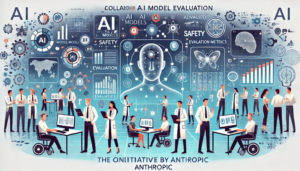Introduction
As a technology columnist specializing in AI and emerging tech trends, I’m excited to introduce you to a groundbreaking approach in the world of video game design: Procedural Content Generation via Knowledge Transformation (PCG-KT). This innovative method represents a significant leap forward in how we create and design video games. But before diving into this cutting-edge technique, let’s take a moment to understand its foundational concepts.
What is Procedural Content Generation (PCG)?
In the ever-expanding universe of video games, designers are constantly seeking ways to create engaging and immersive experiences for players. One technique they use to achieve this is Procedural Content Generation (PCG). Simply put, PCG is an automated way of creating game elements like levels, characters, and objects using algorithms and mathematical models, rather than relying on manual, handcrafted design.
PCG has been used in various forms to enhance game experiences, making them more dynamic, unpredictable, and unique. Traditional PCG techniques include search-based methods, which involve exploring a vast space of possible game content, and machine learning-based approaches, where AI models learn to generate content by analyzing existing examples.
Introducing Knowledge Transformation in PCG
Now, let’s explore the new approach: Procedural Content Generation via Knowledge Transformation (PCG-KT). This innovative method goes beyond traditional PCG by incorporating knowledge transformation—processes that convert information into actionable content generation strategies. PCG-KT leverages advanced AI algorithms to analyze vast amounts of data and generate content that reflects diverse cultural, artistic, and technical influences.
This approach not only enhances the diversity of game elements but also ensures that content aligns with player expectations while fostering creative exploration. By integrating knowledge transformation, PCG-KT empowers designers to explore new creative possibilities and challenge conventional design norms.
Examples of PCG-KT in Action
To better understand how PCG-KT works, let’s look at some examples. Imagine a futuristic city-building game where players construct virtual cities. With PCG-KT, the system could automatically generate unique buildings inspired by different architectural styles around the world—think a fusion of Islamic architecture with Japanese Zen gardens. The algorithm might even incorporate local environmental factors to create varied landscapes.
Another example could be a fantasy RPG where each player’s character has a distinct personality and backstory. PCG-KT might use data from user interactions to dynamically generate unique storylines, ensuring that no two players experience the game in exactly the same way.
The Potential of PCG-KT
The potential applications for PCG-KT are vast and far-reaching. Here’s how it could transform the gaming industry:
- Diversity in Game Design: PCG-KT can generate a wide variety of game elements, from levels to weapons to characters, ensuring that each player experiences a unique and unpredictable environment.
- Innovation in Gameplay: By incorporating knowledge transformation, PCG-KT can evolve over time, introducing new gameplay mechanics based on user feedback and industry trends.
- Cultural Impact: PCG-KT has the potential to influence how players interact with game worlds, creating environments that reflect diverse cultures and societal norms.
The Future of PCG-KT
As researchers continue to push the boundaries of PCG-KT, we can expect to see a new wave of innovative and exciting gaming experiences. The integration of knowledge transformation into AI systems opens up endless possibilities for creative expression in game design.
Moreover, advancements in machine learning are likely to further enhance the capabilities of PCG-KT, enabling designers to explore even more complex and nuanced content generation processes. With each iteration, PCG-KT becomes not just a tool for creating games but a catalyst for innovation in the entire field of interactive media.
Challenges and Considerations
While PCG-KT offers immense potential, it also presents challenges that designers and developers must address. One major challenge is ensuring that the generated content aligns with player expectations while maintaining game balance and playability. Another consideration is the need for efficient algorithms to handle the computational demands of PCG-KT.
To overcome these challenges, collaboration between designers, technologists, and ethicists is essential. By working together, we can ensure that PCG-KT not only pushes the boundaries of creativity but also remains accessible and inclusive for all players.
Conclusion
Procedural Content Generation via Knowledge Transformation (PCG-KT) represents a paradigm shift in how video games are designed and experienced. This innovative approach has the potential to revolutionize the industry, creating more diverse, dynamic, and engaging gaming experiences for players worldwide. As we continue to explore and refine PCG-KT, it becomes clear that this technology holds the key to unlocking new creative possibilities in interactive media.
This article is part of a broader discussion on how AI and machine learning are transforming the way we create and consume digital content. For more insights into this groundbreaking field, you can explore related works by experts like Benjamin Clarke, who has written extensively on the cultural implications of PCG-KT in gaming.
By embracing PCG-KT, the gaming industry is poised to achieve new levels of innovation and creativity. Let’s stay tuned as we continue to unlock the full potential of this revolutionary approach.


























